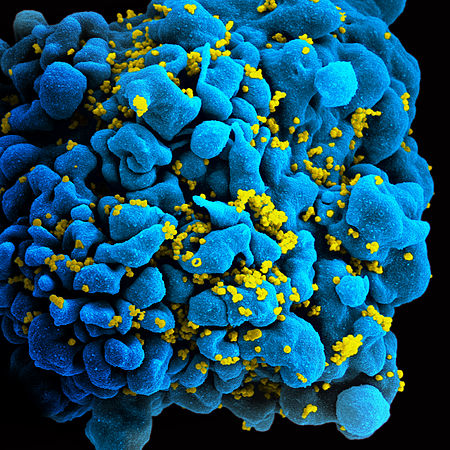| Main page | Recognized content | Subcategories |
Welcome to the human sexuality portal
Human sexuality is the way people experience and express themselves sexually. This involves biological, psychological, physical, erotic, emotional, social, or spiritual feelings and behaviors. Because it is a broad term, which has varied with historical contexts over time, it lacks a precise definition. The biological and physical aspects of sexuality largely concern the human reproductive functions, including the human sexual response cycle.
Someone's sexual orientation is their pattern of sexual interest in the opposite and/or same sex. Physical and emotional aspects of sexuality include bonds between individuals that are expressed through profound feelings or physical manifestations of love, trust, and care. Social aspects deal with the effects of human society on one's sexuality, while spirituality concerns an individual's spiritual connection with others. Sexuality also affects and is affected by cultural, political, legal, philosophical, moral, ethical, and religious aspects of life.
Interest in sexual activity normally increases when an individual reaches puberty. Although no single theory on the cause of sexual orientation has yet gained widespread support, there is considerably more evidence supporting nonsocial causes of sexual orientation than social ones, especially for males. Hypothesized social causes are supported by only weak evidence, distorted by numerous confounding factors. This is further supported by cross-cultural evidence, because cultures that are tolerant of homosexuality do not have significantly higher rates of it.
Evolutionary perspectives on human coupling, reproduction and reproduction strategies, and social learning theory provide further views of sexuality. Sociocultural aspects of sexuality include historical developments and religious beliefs. Some cultures have been described as sexually repressive. The study of sexuality also includes human identity within social groups, sexually transmitted infections (STIs), and birth control methods. (Full article...)
Selected article
Heterosexuality is one of the three main classifications of sexual orientation along with bisexuality and homosexuality, which are each parts of the heterosexual–homosexual continuum.
The term heterosexual or heterosexuality is usually applied to humans, but it is also observed in all mammals. The word heterosexual is etymologically formed by adding the combining form of Greek έτερος heteros (meaning "different" or "other") as a prefix to "sexuality". (Full article...)
Selected image
Did you know


- ... that sexologist James M. Cantor (pictured) found that male pedophiles have significantly less white matter in their brains than do control subjects?
- ... that Clellan S. Ford and Frank A. Beach, in their 1951 book Patterns of Sexual Behavior, concluded that there is a "basic mammalian capacity" for homosexuality?
- ... that Troughman is mythically famous in Sydney, Australia, for lying down in urinals?
- ... that a woman's G-Spot can be easily reached in the spoons sex position (pictured)?
September - December 2010
Human sexuality in the news
- 12 November 2024 – Anglican Communion sexual abuse cases
- Justin Welby, the Archbishop of Canterbury and the symbolic head of the Anglican Communion, resigns over his handling of barrister John Smyth's sex abuse scandal. (NPR) (AP)
- 11 November 2024 –
- The International Criminal Court announces an investigation into prosecutor Karim Ahmad Khan over accusations of sexual misconduct previously reported by The Guardian in October. (BBC News) (The Guardian)
- 5 November 2024 –
- Equatoguinean vice-president Teodoro Nguema Obiang Mangue warns that politicians caught having sex in their offices could face harsh consequences after a civil servant was caught having sex with multiple women while on the job. (BBC News)
Get involved
For editor resources and to collaborate with other editors on improving Wikipedia's Human sexuality-related articles, see WikiProject Sexology and sexuality.
Topics
Tasks

- Cleanup listing for WikiProject Sexology and sexuality — bot-generated list of articles within the scope of this WikiProject tagged as needing attention
- Cleanup listing for WikiProject LGBT studies — bot-generated list of articles within the scope of this WikiProject tagged as needing attention
Related portals
Associated Wikimedia
The following Wikimedia Foundation sister projects provide more on this subject:
-
Commons
Free media repository -
Wikibooks
Free textbooks and manuals -
Wikidata
Free knowledge base -
Wikinews
Free-content news -
Wikiquote
Collection of quotations -
Wikisource
Free-content library -
Wikiversity
Free learning tools -
Wiktionary
Dictionary and thesaurus





















